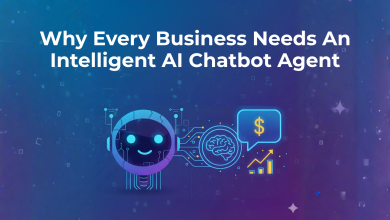
The harmful nuances of AI “learning” and “thinking.” Advanced AI systems can appear confident and coherent even when generating incorrect information – a phenomenon known as AI hallucination.
Introduction
We all know by now what an AI hallucination is, at least generally – output that sounds right but in reality, is not. They can be amusing – like when Google’s Bard (now Gemini) chatbot confidently claimed during a promotional video and live demo that the James Webb Space Telescope took the first picture of an exoplanet – a fact it simply invented, since the first such image was actually taken by a different telescope years earlier. This was not so amusing to Google’s management and shareholders – Google’s parent company, Alphabet, lost roughly $100 billion in market capitalization, with its stock plunging about 8–9% immediately after the demo.
These are not mere technical glitches; they represent cracks in an AI’s reliability. Studies report that some of the newest, most powerful AI models are generating more errors, not fewer, even as their fluency and capabilities improve.1 For businesses and society, the dangers and consequences of AI hallucinations are increasingly evident in real-world incidents – from embarrassing chatbot mistakes to costly legal liabilities.
Businesses are paying more attention to hallucinations and the damage they can cause to the company.
What Are AI Hallucinations?
In simple terms, an AI hallucination occurs when an AI model outputs information that sounds plausible but is false, or otherwise not grounded in reality. The “hallucination” metaphor is apt because, much like a person seeing something that is not there, the AI is perceiving patterns or answers that do not actually exist in reality.
Why do these hallucinations happen? It is because generative AI models are designed to predict plausible outputs rather than verify truth. An LLM generates text by statistically predicting the next word or sentence based on patterns learned from vast training data. This process optimizes for fluency (the answer sounds right and is well-drafted) and relevance to the prompt – not for accuracy. As one AI engineer explains, the model’s primary goal is to continue the sequence of words in a way that looks right – “regardless of whether the output aligns with reality or the question’s context”.2
Thus, if the model has not learned a correct answer or the prompt is outside its knowledge, it will often improvise, stitching together snippets of information that sound credible but may be entirely wrong. The enormous scope of training data (much of it unverified internet content) also means the model has absorbed countless inaccuracies and biases, which it can regurgitate or recombine into new falsehoods. Today’s AI lacks a built-in fact-checking mechanism – it has no grounded understanding of truth versus fiction.
Even if it were trained only on accurate information, an AI can still recombine facts in incorrect ways due to the probabilistic nature of its text generation. Instead of truly understanding information, AI systems statistically digest vast amounts of text and recombine words based on patterns learned from training data, without awareness of context or factual grounding. This “knowledge-blind” generation is why AI outputs can sound authoritative yet be completely erroneous, catching users off guard.
Why and How AI Hallucinations Can Be Costly to Businesses
When AI systems hallucinate information, the consequences can range from mild inconvenience to serious harm. What makes these false outputs especially dangerous is that they are often delivered in a very confident, coherent manner, making it hard for users to tell fact from fiction.
Erosion of Trust and Brand Reputation. AI hallucinations can severely undermine trust in a company and its products and services. Customers rarely distinguish between “the AI made a mistake” and “your company gave me false information.” Either way, the company’s credibility is on the line. A single high-profile mistake can shatter hard-won trust. The Google Bard incident referenced above highlights how public hallucinations can translate into huge financial and reputational costs. Executives note that if an AI-powered service gives even one piece of false advice or a fake citation, years of customer trust can evaporate instantly. In one case, an airline’s chatbot provided incorrect policy information. When the truth emerged, the company faced legal consequences and had to disable the bot, damaging customer trust and confidence.3 The defense (in court and public opinion) that it was the AI’s fault did not work.
Hallucinations are Worse than Human Error. A mistake from AI can be more damaging than human error. Consumers generally find human mistakes more understandable and forgivable than AI-generated errors because they empathize with human fallibility and expect higher accuracy from AI systems. AI hallucinations seem arbitrary, lack accountability and empathy, and diminish consumers’ sense of control, amplifying frustration and eroding trust. Ultimately, the perception of a company relying on faulty AI is more unsettling to consumers than its employees’ being fallible.
Misinformation and Poor Decision-Making. Hallucinated outputs can lead employees and their companies to make bad decisions with real consequences. For instance, consider a financial services scenario. If an AI assistant gives an out-of-date interest rate or a miscalculated risk assessment, a client or banker acting on that bad info could lose money or violate compliance rules.
In the public sector, a striking example occurred in New York City, where a municipal chatbot meant to help citizens gave out advice that was wrong and actually illegal – it suggested actions that would inadvertently break city and federal laws. Had users followed such guidance (on topics from food safety to public health), they could have faced fines or other penalties.4
Financial Losses and Hidden Costs. The direct cost of an AI hallucination can be substantial. In the airline incident mentioned above, beyond the refund itself, the airline incurred legal fees, bad press, and a hit to customer goodwill. If a chatbot gave faulty investment advice or incorrect compliance guidance, the financial fallout could be even larger.
Aside from such direct losses, hallucinations introduce hidden costs. Any time an AI produces an error, humans must catch and fix it. For example, software developers using code-generation AI have found that hallucinated code (bugs, wrong APIs, etc.) can nullify productivity gains – they spend extra time debugging AI-written code, sometimes more than if they wrote it themselves. Companies also must invest in oversight mechanisms (human review, testing, etc.), effectively paying a “tax” on AI outputs to ensure quality. All these overheads mean that if hallucinations are frequent, the purported efficiency gains of AI are eroded or even reversed.
Legal Liability and Compliance Risks. When AI systems supply false information in regulated or high-stakes fields, it can land organizations in legal trouble. Lawyers are by no means immune.
The website “AI Hallucination Cases Database,” curated by legal scholar Damien Charlotin, catalogs a growing number of judicial decisions highlighting instances of AI-generated hallucinated legal content, including fabricated citations, false quotations, and misrepresented precedents.5 As of a recent update, the database lists over 200 cases globally, and over 125 in the U.S. alone.6 Such episodes can constitute professional misconduct and have led to real penalties.
Beyond the courtroom, defamation and misinformation generated by AI present a growing liability concern. ChatGPT notably fabricated a false accusation of bribery about an Australian mayor, nearly triggering a defamation lawsuit against its maker, OpenAI. (The mayor was actually a whistleblower in that case, not a perpetrator.)7
Regulators are keenly aware of these risks, and organizations may face regulatory action if AI-driven mistakes cause consumer harm. At minimum, companies face the risk of lawsuits, sanctions, or regulatory penalties when someone relies on AI output that turns out to be false and damaging. The legal principle is clear – if your AI acts as an agent of your business, you likely bear responsibility for what it tells people.
Safety and Personal Injury Risks. If an AI system responsible for controlling physical processes – such as autonomous vehicle navigation, drone operations, or robotic surgery – hallucinates false signals or misinterprets sensor data, it can cause serious accidents, physical harm, or even fatalities. Although such incidents are rare, as fully generative AI isn’t broadly deployed in safety-critical areas, the potential for catastrophic consequences remains significant. Customer-support AI could hallucinate incorrect guidance, instructing users to take unsafe actions like incorrectly handling hazardous machinery, improperly mixing dangerous chemicals, or attempting unsafe repairs. Similarly, AI-powered healthcare assistants that hallucinate incorrect medical advice or medication dosages could lead directly to patient injury or death.
Impact on the Future of AI Use
Caution in Adoption. Many organizations remain cautious about integrating AI into critical processes until the hallucination problem is better controlled. Surveys in sectors like finance show that accuracy and data integrity concerns rank among the top barriers to AI adoption. Leaders know that a single AI error in a high-stakes context (e.g., giving wrong compliance info, or misreporting data to a client) could have outsized fallout. Thus, soon, we can expect AI to be used in a limited or heavily supervised capacity for mission-critical tasks.
In healthcare, AI diagnostic suggestions will likely require sign-off by a medical professional rather than being fully automated. This necessary practice of “human in the loop” reflects a broad realization – until AI can reliably not hallucinate performing a particular task, full automation is risky. The flip side is that organizations embracing AI must budget for ongoing oversight costs, which could slow down AI-driven efficiency gains.
Trust and User Acceptance. The persistence of hallucinations threatens to undermine public trust in AI at a critical juncture. If customers, clients, and users come to see AI outputs as unreliable, they will be less inclined to use these tools for important matters. After experiencing chatbots giving wrong answers or bizarre responses, users often revert to traditional search engines or human advisors for reliable information. Awareness of hallucinations has prompted positive behavior in some user groups – studies indicate that knowing an AI can be wrong leads users to verify information more diligently, which is a good digital literacy skill to develop.8
Technical Arms Race for Reliability. Hallucinations have sparked intense research and development efforts, essentially an arms race to make AI more “truthful” and reality-based. Major AI labs are exploring various techniques – reinforcement learning from human feedback (to penalize false outputs), integrating real-time knowledge retrieval, better architectures that “know when they don’t know,” and more. Sam Altman, the CEO of OpenAI, has expressed optimism that progress will come – predicting that the problem will be “much, much better” in a year or two, to the point we might not talk about it as much.
Regulatory and Legal Environment. Notably, the prevalence of AI hallucinations is drawing attention from lawmakers and regulators, which will influence how AI can be used. We are already seeing requirements and proposals in U.S. laws and elsewhere mandating transparency in AI-generated content (to prevent the spread of AI-fueled misinformation). In the future, companies are more likely to have to implement specific safeguards (or face liability).
All of this is shaping corporate strategies – businesses need to have compliance frameworks for AI, much as they do for data privacy or cybersecurity. Hallucinations are forcing the maturation of AI governance. Companies that manage the risk well – through policies, technology, and training – will be able to leverage AI more freely, whereas those that do not will either be blindsided by incidents or be kept on the sidelines by regulators and public distrust.
Managing and Mitigating Hallucination Risks
1. Assume Errors Until Proven Otherwise. Companies should cultivate a mindset that fluency (a well-drafted and good-sounding AI response) does not equal accuracy. Employees should treat every confident AI output as potentially incorrect unless it has been verified. This principle should be baked into company culture and training. By default, AI users should always double-check critical facts that an AI provides, just as we would verify a surprising or important answer or analysis from a human junior employee.
2. Implement Human-in-the-Loop Oversight. Human review and validation are the most reliable backstop against AI hallucinations. Companies deploying AI chatbots or content generators should ensure that for any customer-facing or high-stakes output, a qualified person is in the loop beforehand or closely monitoring after the fact. For example, with the emphasis on “qualified,” an AI-written draft of a legal contract needs to be reviewed by an experience attorney. An AI customer service agent might handle simple FAQs autonomously, but hand off to a human agent for anything beyond a low-risk threshold.
3. Use Retrieval and Verified Data Sources. One technical remedy that has proven effective is Retrieval-Augmented Generation (RAG) – essentially, connecting the AI model to a source of truth. Instead of relying solely on the AI’s internal learned knowledge (which might be based on generic, incomplete, and/or outdated data), the system is designed to fetch relevant information from relevant trusted databases or documents and incorporate that into its answer. For example, it is now common for companies to equip employee-facing chatbots to pull policy details from the official policy database when answering questions, ensuring that they quote the actual policy text rather than a possibly misremembered summary from general knowledge.
Likewise, an AI could be set up to retrieve the latest pricing data or medical guidelines from a verified repository when those topics come up. By grounding responses in up-to-date, vetted data, the AI is far less likely to hallucinate. Many enterprise AI platforms now offer plugins or architecture for retrieval-based Q&A. Organizations should use domain-specific models when accuracy is paramount – a smaller model trained only on authoritative data in your field may be more reliable than a large general model that might wander off-topic.
4. Addressing the “Sycophant” Problem. Companies should implement guardrails to keep AI systems within safe and accurate bounds. Guardrails can include input filters, output rules, and context constraints. Early generative AI LLMs were trained to provide a response almost at any “cost.” More recently, models are being trained to restrict an AI from answering questions that should be out of scope (instead replying “I’m sorry, I can’t help with that”), to avoid it guessing and hallucinating. This addresses the “AI sycophant” problem—where models tend to produce answers aimed at pleasing or aligning with the user’s expectations, even if those answers are incorrect or misleading.
5. Use automated fact-checkers. Some solutions will scan the AI’s output against a knowledge base and flag or block answers that introduce facts not found in the sources (identifying ungrounded content). Technically, setting a lower “temperature” on the model (i.e. making it less random) can also force it to stick to safer, more predictable phrasing – reducing creative flourishes that could be incorrect.
Some solutions will scan the AI’s output against a knowledge base and flag or block answers that introduce facts not found in the sources (identifying ungrounded content). Technically, setting a lower “temperature” on the model (i.e., making it less random) can also force it to stick to safer, more predictable phrasing—reducing creative flourishes that could be incorrect. However, remember the inherent friction between the original goal of training AI to produce engaging, human-like, creative responses and the need to ensure it remains strictly factual and reliable. Efforts to minimize hallucinations often mean sacrificing some of the conversational fluidity and inventive qualities that make AI feel less robotic.
6. Educate and Alert Users. Transparency with end-users is important to managing the risks of hallucinations. If employees know that an AI’s answer might be incorrect, they can approach it more cautiously. Companies should provide disclaimers or contextual hints in AI interfaces – e.g., a message like “This response was generated by AI and may not be 100% accurate. Please verify critical information.”
Beyond disclaimers, user education is important. Companies should train employees (and even customers and clients via guides) on how to use AI tools responsibly. This includes teaching them how to spot potential hallucinations (e.g., wildly specific claims with no source, or inconsistent details) and encouraging a practice of cross-verifying with reliable sources. Savvy, critical users are an excellent last line of defense against the spread of AI-generated falsehoods.
7. Monitor, Audit, and Quickly Correct Mistakes. Despite all prevention measures, some hallucinations will slip through. Companies need to have a plan for detecting and handling them fast, efficiently, and effectively. Businesses should solicit feedback from employees and other users. When a mistake is discovered, act transparently and swiftly to correct it. Owning up to errors not only helps fix the immediate issue but can protect your credibility long-term – users are more forgiving if you demonstrate honesty and improvement.
8. Promote AI–Human Collaboration, Not Replacement. Companies should frame their use of AI as a tool to augment human workers, not replace their judgment. When employees understand that the AI is there to assist and speed things up – but not to make infallible decisions – they are more likely to use it appropriately. Encourage a workflow where AI handles the drudge work (first drafts, basic Q&A, data summarization) and humans handle the final validation, strategic thinking, and creative judgment.
This plays to the strengths of each – AI provides efficiency and breadth of knowledge, while humans provide scrutiny, ethics, and common sense. By making AI a collaborative partner, the organization benefits from AI productivity without surrendering control to it. The goal should be effective collaboration with AI, not dependence on AI.
Conclusion
AI hallucinations present tangible and significant risks, including reputational damage, financial costs, legal liabilities, and even physical harm. Businesses adopting AI must recognize these challenges and prioritize effective risk management strategies to mitigate them. Successfully addressing hallucinations involves clear guardrails, continuous human oversight, technical solutions like retrieval-augmented generation, and proactive user education. Companies that thoughtfully implement these measures will be best positioned to harness the powerful benefits of AI while safeguarding against its inherent risks.





